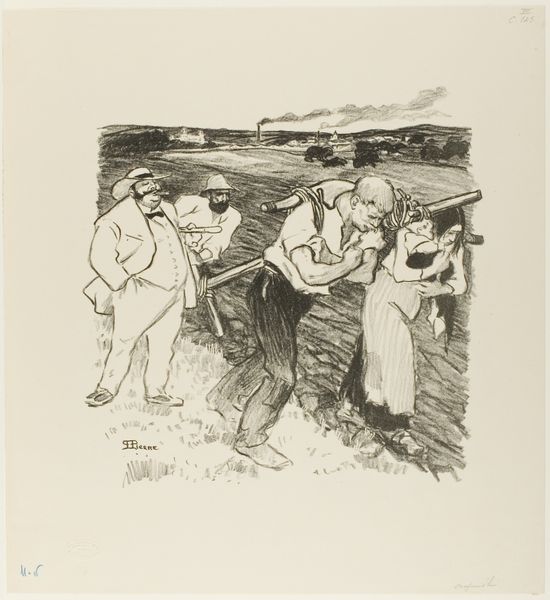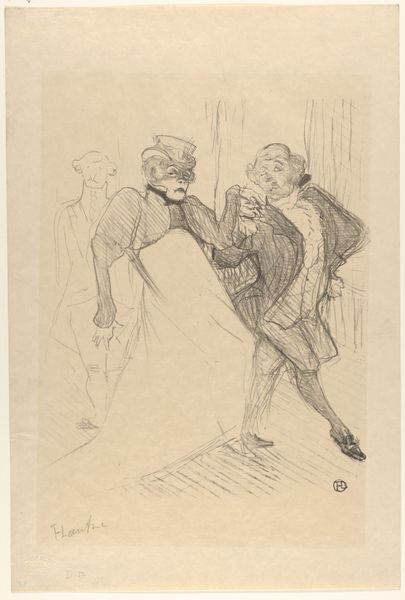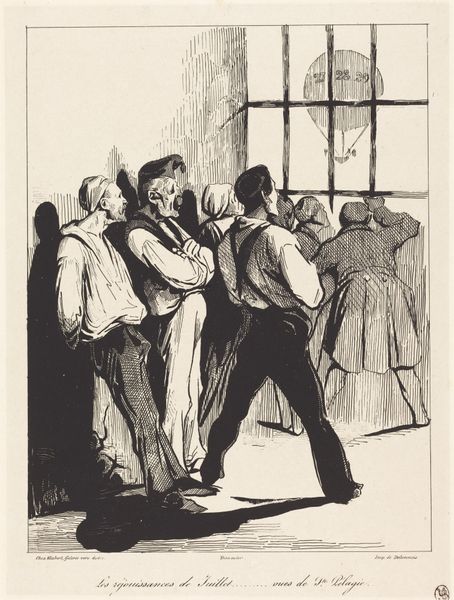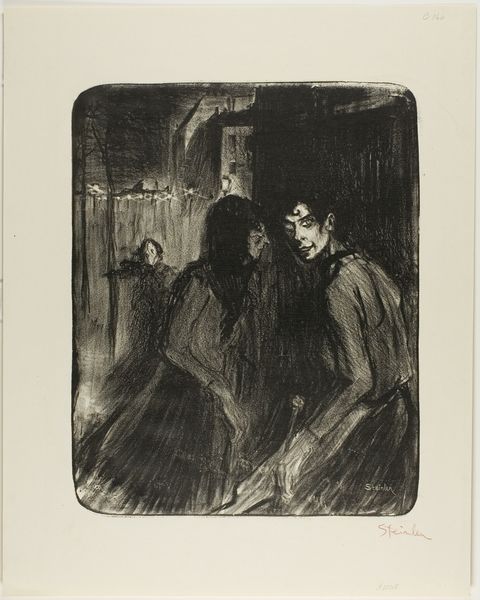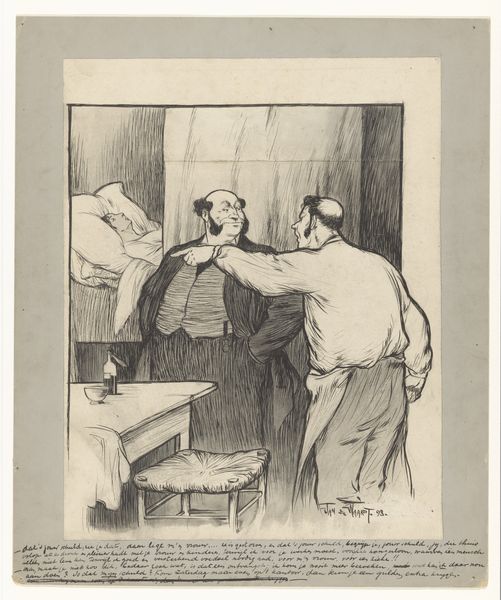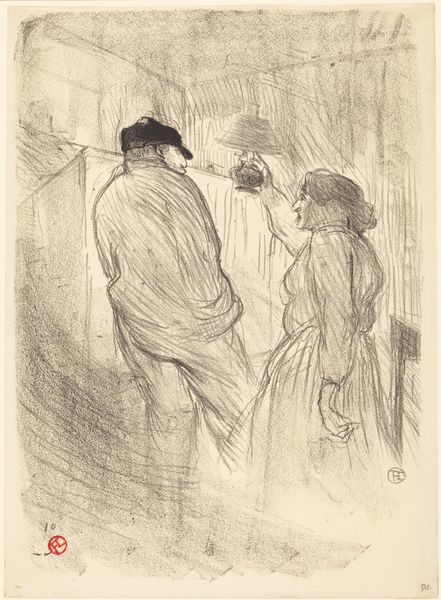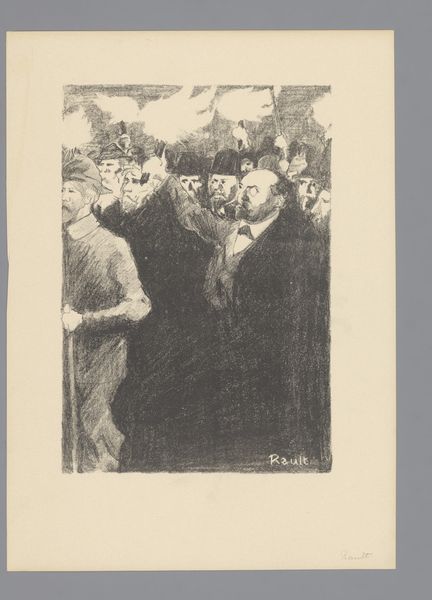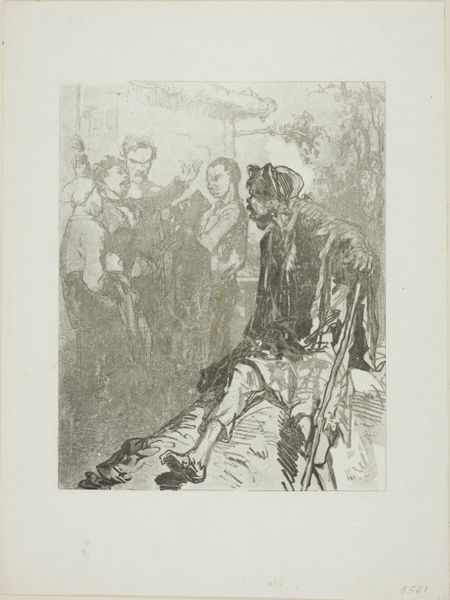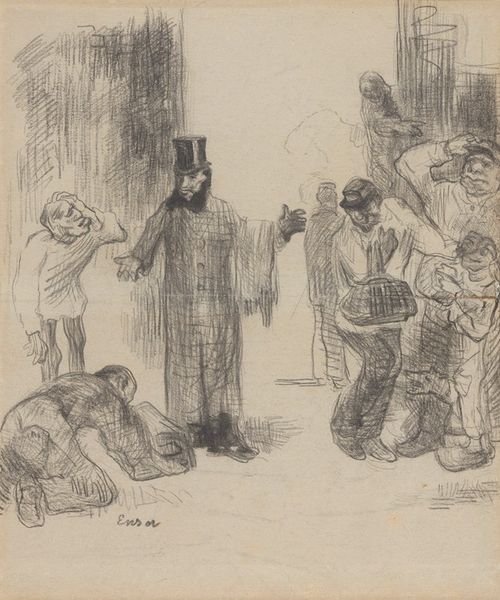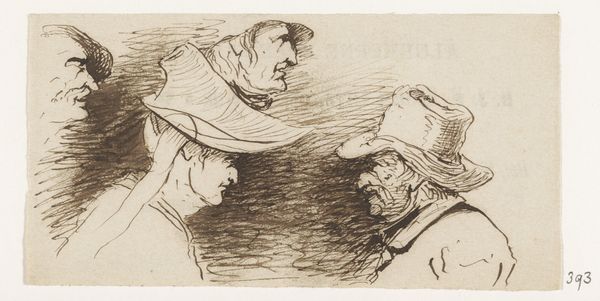
Au Moulin Rouge: Un Rude! Un Vrai Rude! 1893
0:00
0:00
Dimensions: Image: 14 5/16 × 10 1/16 in. (36.3 × 25.5 cm) Sheet: 18 3/8 × 12 1/4 in. (46.7 × 31.1 cm)
Copyright: Public Domain
Editor: Toulouse-Lautrec’s lithograph, "Au Moulin Rouge: Un Rude! Un Vrai Rude!" from 1893 depicts a night at the Moulin Rouge, capturing what looks like a fleeting glimpse of people gathered together. What strikes me most is the artist's use of the lithographic process to create such delicate, almost sketch-like lines. How did this choice of material influence the meaning of the artwork? Curator: This is precisely the point. Lautrec's adoption of lithography, traditionally a medium for mass reproduction, to portray the Parisian demimonde, reflects a collapsing of boundaries between fine art and commercial art. The very accessibility of printmaking allowed him to disseminate images of a subculture, transforming what might have been viewed as private and exclusive into public spectacle. Editor: So, it's about who could access this image and how it circulated. Did the material's accessibility change the way these individuals, and places like the Moulin Rouge, were perceived? Curator: Exactly! Lithography democratized the image. Think about it - these prints became available not only to the elite but also to the middle class, who could then consume images of Parisian nightlife, and in turn, create their own narratives around them. Lautrec skillfully exploits the materials at hand to turn the social gaze onto the mechanisms of production and consumption, questioning the social divisions in late 19th century Paris. The way the lines capture the haze and immediacy of the scene makes it a uniquely modern object. Editor: It’s fascinating how the medium itself can be interpreted as a commentary on the society it depicts! Curator: Indeed. By focusing on the materials and the social context of production, we move beyond the surface representation and begin to understand the artwork's complex relationship to its time. What's more, Lautrec challenges what we view as the divide between the supposedly high and low culture. Editor: That's a perspective I hadn't fully considered before. Thank you!
Comments
No comments
Be the first to comment and join the conversation on the ultimate creative platform.
